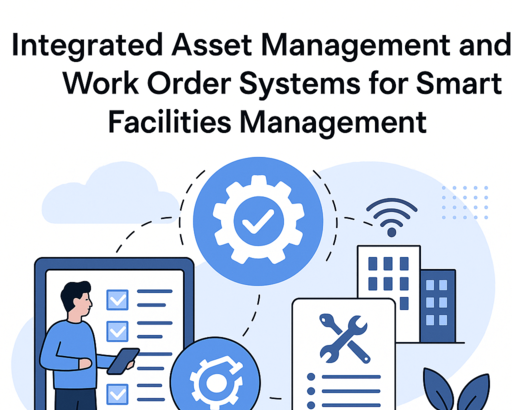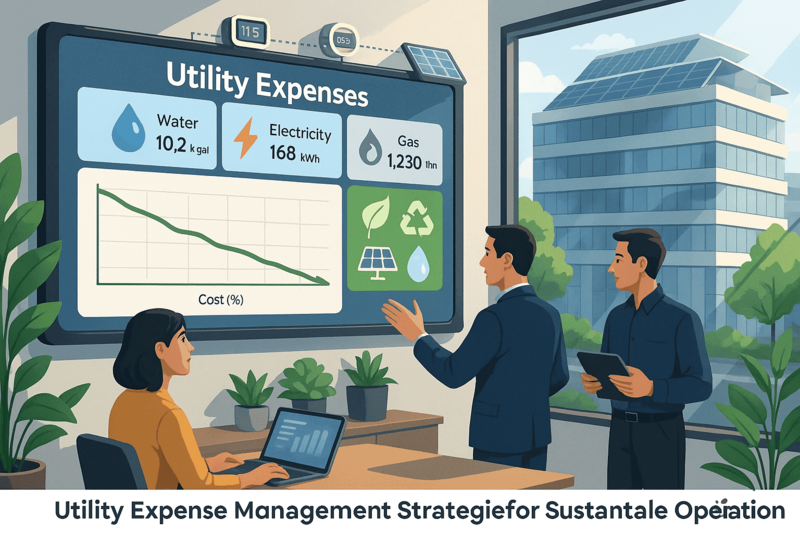7 Effective Strategies to Enhance Maintenance Efficiency
Key Takeaways
- Proactive maintenance like preventive, condition-based and predictive maintenance minimizes unplanned downtime and extends asset life. Scheduled inspections and data-informed decisions make for efficient resource allocation and minimal costs.
- With real time monitoring and the integration of advanced technology, maintenance teams can nip problems in the bud, increasing overall operational efficiency.
- Engineering for maintainability reduces future maintenance. Streamlining workflows and access to equipment can increase efficiency.
- By supplying resources and training, as well as promoting open communication, you empower maintenance teams to find improvements themselves, and to stay performing at a high level.
- Monitoring metrics like maintenance costs per unit and equipment uptime enables companies to gauge efficiency and make data-driven decisions.
- Straddling cutting-edge maintenance technologies and prudent budgeting facilitates sustainable efficiency gains without sacrificing quality.
Maintenance efficiency strategies are to make maintenance work faster, slicker and cheaper. Lots of teams rely on these schedules to save time and prevent issues before they escalate.
Teams typically concentrate on straightforward action, low tech instruments and constant monitoring to ensure smooth operations. The good plans work for both large and small setups, keeping work on track and budgets stable.
The next few sections provide essential pointers and actual examples for improved maintenance outcomes.
Foundational Maintenance Strategies
Maintenance efficiency follows a panoply of strategies, each with its industry-specific fit. An effective strategy mixes together multiple fundamental approaches to maintain equipment, reduce unplanned downtime, and minimize expenses.
Here are some main strategies:
- Preventive maintenance
- Condition-based maintenance
- Predictive maintenance
- Run-to-failure maintenance
- Spare parts and inventory management
- Setting and tracking key performance indicators (KPIs)
Preventive maintenance is about preventing breakdowns. This philosophy blossomed in the 20th century as machines became increasingly complex and the cost of failure skyrocketed. Today, nearly 80% of maintenance managers implement preventive measures to minimize unexpected downtime.
It encompasses timed inspections, cleaning, and parts replacement. For instance, a factory could inspect and oil conveyor belts every three months to keep them running fluidly. The idea is to identify wear and tear damage and repair it before it leads to larger issues.
Regular habits impose structure on our daily work. This schedule should include routine inspections, scheduled maintenance and ensure that logs remain current. With no plan, teams forget steps or miss checks, leading to more breakdowns.
One huge culprit is sub-par spare parts and materials management. If a required part is not on hand, maintenance is postponed—occasionally extending downtime by more than 30%. Maintaining an inventory and parts tracking accelerates repairs.
Condition-based and predictive maintenance use data to inform decisions. Sensors and monitoring tools verify equipment health live. When wear symptoms appear, teams can intervene before a failure occurs.
These strategies increase asset uptime 10–20% and extend asset life span up to 40%. For less critical things, a run-to-failure plan might make more sense, as it’s cheaper to fix than regular checking.
Monitoring KPIs such as MTBF, MTTR, or OEE demonstrates the effectiveness of a maintenance strategy. These figures direct adaptations to the strategy, ensuring that it aligns with practical requirements.
The Predictive Leap to Efficiency
Predictive maintenance is notable for its real-time data and intelligent tools to identify early signs of equipment wear or failure. Instead of scheduled or breakdown-driven maintenance, predictive maintenance uses sensors and AI to monitor the health of machinery in operation. This shift can save costs, reduce downtime, and enable teams to work more effectively.
Real-time monitoring tools, such as vibration or temperature sensors, collect information from operating machines. These sensors can detect minor variations that predict larger issues lurking ahead. AI software can then analyze this information and highlight components that might require attention in the near future.
That is, teams can intervene before a machine fails, making repairs less expensive and work time more consistent. Installing a predictive maintenance plan requires more than simply purchasing the sensors. Groups require a roadmap that defines goals, monitors critical metrics, and employs a strong upkeep system.
A robust program utilizes both recent and historical data on how the machines have performed. This gives teams a sense of when to intervene and when to defer, which saves both time and money. Training the maintenance crew is equally important. Workers actually have to know how to use the tools and how to interpret the data.
This enables them to identify issues more quickly and prevent both over- and under-working of assets. Critics argue this approach can result in unnecessary work on machines that get less use, or insufficient work on busy machines. A defined plan and periodic review can help resolve these problems.
Lower Maintenance by Design
Lowering maintenance begins at design. Maintenance-friendly design is one element of the DFX (Design for eXcellence) mentality that emphasizes maintaining products. That is, utilizing savvy decisions upfront, not just damage control down the line.
Your low-maintenance design checklist begins with selecting rugged textiles that absorb everyday wear and tear and don’t fade quickly. For instance, stainless steel doesn’t rust like mild steel does, so it’s a better option for outdoor or wet environments.
Employing strong plastics or composites at high-stress points can reduce repairs as well. Then, select standard parts and modular pieces. If components are interchangeable or compatible, upkeep is quicker and cheaper.
For example, bolts and screws that accommodate standard tools quicken repairs, and modular components allow users to swap out just the damaged part, rather than the entire system.
Maintenance workflows need to be easy and obvious. An optimized flow design means employees avoid squandering time on low-value steps. Batch routine inspections and utilize quick-reference guides or flow charts to aid.
Quick fasteners and labels that display what goes where assist in expediting projects. Open layouts and no tight spaces provide easy access to what needs fixing. This is crucial for large machines or locations with many activities.
Designs need to indicate weak links too—components designed to break first. This guides workers where to look when things break, reducing hunt time.
Safety needs to be engineered in – as in having covers or guards in place to prevent injuries while checking or repairing.
The Human Element in Maintenance
The human element in maintenance determines operational efficiency and system longevity. Human error is a big cause of crashes and crumblings. This usually stems from training voids, fatigue, or just getting too comfortable.
Humans working with machines day in, day out, often know their personalities and can detect early warning signs of impending disaster. Their foresight makes repairs before they become major. Still, stress and distractions and low drive delay work and cause errors.
Viewing maintenance as a human endeavor, not a technical to-do list, makes all the difference. Open communication among technicians, managers, and other departments is essential. It makes sure work is planned, done right, and tracked so nothing falls through.
Resources and training for maintenance teams often include:
- Safety workshops and hands-on training sessions
- Access to updated technical manuals and guides
- Regular learning on new tools, smart sensors, and systems
- Courses in predictive maintenance and data analysis
- Support for job-specific certificates
New tech, like predictive tools and IoT sensors, means teams have to keep learning and acquire new skills. Training is time and money as well, but it aids people in maintaining change. Employees must learn to operate instruments, address issues and remain secure.
They must learn to collaborate with new digital systems as more work moves online. A robust culture of open communication and collaboration inspires confidence and reduces errors. Technicians’ feedback is appreciated.
It assists in identifying vulnerability in habits and indicates where to optimize. When workers feel listened to, they’re likelier to care about their work and speak up about hazards. Small things like expressing gratitude, celebrating victories, or providing incentives for strong performance can boost morale and maintain teams on point.
Key Performance Indicators
Key performance indicators, or KPIs, assist in evaluating the effectiveness of maintenance activities. They indicate where to tweak and how to do better going forward. For any team that wants to optimize its machines and tools, it’s critical to monitor the right metrics.
Here are some of the most useful KPIs for maintenance efficiency:
- Mean Time To Repair (MTTR): MTTR shows the average time it takes to fix equipment and restart production. For instance, if a line halts three times in a week and requires five, four, and six hours to repair, the MTTR is five hours. Lower MTTR = faster repairs, less lost time.
- Overall Equipment Effectiveness (OEE): This measures how well machines run by looking at availability, speed, and quality. For example, if your machine is up 90% of the time, runs 95% speed and makes 98% good parts — OEE ends up being around 84%. It helps identify loss due to downtime, bottlenecks or rework.
- Planned Maintenance Percentage (PMP): PMP tracks how much work is planned versus unplanned. If planned 120 of 150 hours, PMP = 80%. A higher number implies teams are laboring more by schedule, less by fire.
- Preventive Maintenance Compliance (PM Compliance): This shows how many scheduled maintenance jobs get done on time. A low rate could imply that teams are missing key checks, which may cause additional breakdowns.
- Scheduled Critical Maintenance Tasks Completed (SMCP): SMCP verifies that the highest priority tasks on the schedule are completed as expected. If 45 of 50 critical jobs are completed, SMCP = 90%.
- Emergency Maintenance Percentage (EMP): EMP looks at the share of work that is last minute. Lower EMP—I had fewer surprises and more stable work.
- Maintenance Backlog: This is the pile of outstanding jobs. It’s an indicator of whether the team is ahead or behind.
- Cost per Unit: This tells how much maintenance costs for each item made. Lower cost per unit can indicate more efficient deployment.
Balancing Cost and Innovation
Balancing cost with the spirit of innovation is about ensuring that any modification, tool, or procedure you add to maintenance actually delivers value. Teams are frequently caught in decisions between cutting expenses and investing in innovation.
The table below shows some of the trade-offs:
Dedicate resources to automation, too—investing in automation tools—such as workflow trackers or basic AI-prompted alerts—can accelerate mundane work. That allows teams to find problems quickly without increasing labor costs.
Automation liberates your staff to focus on new feature updates or triage instead of manual checks. These tools have to budget. To prevent smashing into boundaries, teams ought to allocate a clear budget for tech improvements, sparing enough for daily repairs.
Data supports these strategies. When teams concentrate resources on the right projects, the outcomes get better. The top 10% of projects may generate 70% of the revenue impact.
Dedicating 20% to support and 30% to new features maintains a nice equilibrium. A/B testing, which can increase conversions by as much as 30%, lets teams know what works before making large-scale changes.
Meanwhile, soliciting user feedback with questionnaires and usability tests directs savvy spending. Routine check-ins and feedback loops can generate 30% reductions in time-to-market for new releases.
Conclusion
To jumpstart maintenance work, clever strategies and collaboration count. Specific action, powerful resources, and authentic objectives lead the way. Experienced craftsmen identify minor defects quickly. Good tech and constant inspections avoid major losses. Site appropriate plans save time and cash. Quick fixes and transparent documentation reduce delays. Owners focused on growth watch costs and emerging technology. Easy, clear decisions do the trick. To keep things slick and stoked, check out your configuration today. Identify holes, experiment with fresh advice, and monitor what’s effective. Discuss with your team what you discover. Begin minor, observe the successes, and develop from there.
Frequently Asked Questions
What are the most effective maintenance efficiency strategies?
Smart ways to stay ahead in maintenance. These techniques minimize downtime, increase equipment life, and save money.
How does predictive maintenance improve efficiency?
Predictive maintenance applies data and sensors to monitor equipment condition. It schedules repairs pre-breakdown, saving you both time and money.
Why is design important for maintenance efficiency?
With equipment designed for easy access and repair, maintenance is less time-consuming and less expensive. Smart design makes it safer and more reliable, too.
What role do people play in maintenance efficiency?
Well-trained and enthusiastic personnel are essential. Their experience translates into right inspections, fast repairs and safer working.
Which key performance indicators (KPIs) should be tracked?
Monitor equipment uptime, maintenance turnaround time, cost of repairs and spare part consumption. These KPIs aid in quantifying and refining efficiency.
How can companies balance cost and innovation in maintenance?
Do invest in new technologies that have demonstrated payoffs — watch the price. Choose fixes that increase long term efficiency and reliability.
Can maintenance efficiency strategies be applied globally?
Yup, these strategies cross regional and industry boundaries. Customize them for your local codes, supplies, and equipment requirements for optimal performance.








.png)



.png)

















.jpg)





























